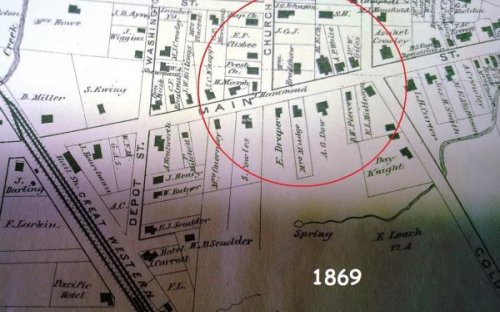Information By Douglas H. Shepard from http://orbitist.com/2014/07/07/anti-slavery-activists-in-the-1800s/
This location is Private property.
William Shattuck was born on 26 December 1784 to William and Lydia (Allis) Shattuck in Guilford VT. In 1793 the family removed to Seneca County NY, where William, Jr. studied law and was admitted to the bar. He was the first lawyer to open an office in Penn Yan, where he practiced for 12 years. Although a Quaker, he enlisted in the War of 1812, becoming captain of an artillery company. According to historical accounts in Penn Yan, when he was 37, Shattuck’s religious principles led him to give up the practice of law, a military career, and membership in the Masons. From Penn Yan he removed briefly to Pennsylvania, and then in 1842 to Randolph NY, where he remained.
Penn Yan historical accounts further noted that “he was a contributor to various temperance and abolitionist newspapers, and in fact published in 1843 a small book entitled, Antidote for infidelity, superstition, sectarian bigotry, violence and oppression. He remained very active in the reform movements of the time.” He was married at least twice, and his last wife was Maria Hart Shattuck (1804 – 1897). William died in Randolph on 14 March 1871. He and Maria are both buried in Randolph Rural Cemetery.
Shattuck corresponded with Frederick Douglass. His four letters to Douglass are summarized in the “Calendar of Correspondence not Printed” section of The Frederick Douglass Papers Series Three, pp.585-587, 596. On 13 November 1851, Shattuck wrote to Douglass arguing, as he had in correspondence with Foote, that the Constitution “is antislavery.” His letter to Douglass of 14 November 1851 “discredits arrests of slave rescuers as unconstitutional.” On 1 January 1852 he summarized for Douglass a West Randolph meeting which had condemned the Fugitive Slave Law, and on 12 June 1852, he wrote condemning “Whigs and Democrats as proslavery.”
It was in 1844 that Shattuck corresponded with Judge E. T. Foote of Chautauqua County. The letters can be found in the Anti-Slavery collection of the Foote papers. In his correspondence with Foote, Shattuck reported that “Elder Wilabee” [Rev. Bliss C. Willoughby) hoped they could have Foote come and address them. Shattuck also reported that “Elder Wilaby informed me this morning” that some Leon inhabitants were moving “towards Liberty” and would like to meet with Foote. All of this suggests a close connection between Shattuck and his later Randolph neighbor Bliss C. Willoughby. It is not clear from the census exactly where Shattuck lived in Randolph, but names of neighbors that were given in the census and appear on maps of the period would indicate that Shattuck resided somewhere near the Baptist, Methodist, and Presbyterian churches in the village.
Source: The Foote Papers

